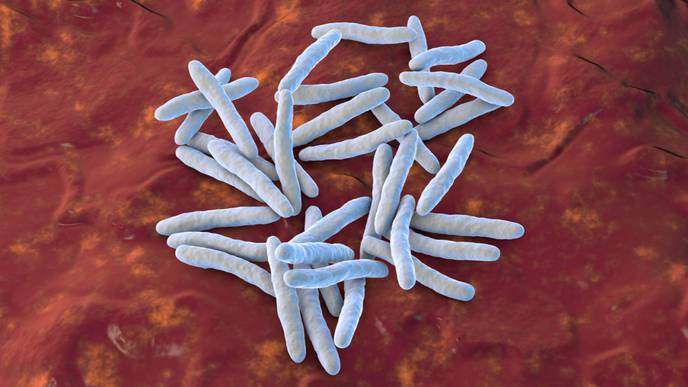ReachMD
Be part of the knowledge.™A New Approach Can Address Antibiotic Resistance to Mycobacterium Abscessus

Overcoming efflux to make a more effective antibiotic
Through their work, the scientists unraveled the mechanism of action by which eAmSPCs are more effective: they circumvent efflux. Efflux is the process that cells use to get rid of a drug — imagine pumping water out of a flooded basement— and is a significant mechanism by which cells become resistant to therapy.
The N-ethylene linkage structure of the eAmSPCs plays a critical role in how the compounds avoid efflux, suggesting that longer linkages modify how the compound is pumped out of the cell. This ultimately shifts the balance toward higher concentrations of eAmSPC within the cell and thus enhances antimicrobial efficacy.
“Over the past two decades, we’ve seen a massive increase in the number of infections caused by non-tuberculous mycobacteria like Mab,” said co-first author Gregory Phelps, PharmD, St. JudeGraduate School of Biomedical Sciences. “We had a place to start with this naturally occurring antibiotic, which, through modification, we’ve made much more efficacious against this clinically relevant pathogen.”
The researchers also found that eAmSPCs work well with various classes of antibiotics used to treat Mab and retain their activity against other mycobacterial strains. Collectively, this work demonstrates that eAmSPCs should be further studied and developed because once issues of tolerability and safety are addressed, these compounds could become next-generation therapeutics.
“It is challenging to attract pharmaceutical companies to develop new antibiotics for several economic reasons,” said Phelps. “If we can boost the drug pipeline against this hard-to-treat bacteria, we can potentially make a difference for patients like the ones we have here at St. Jude who are increasingly faced with limited or no therapeutic options.”
Authors and funding
The study’s co-first author is Martin Cheramie of St. Jude. Other authors include Petra Selchow and Dal Molin, University of Zurich; Michael Meuli, Erik Bottger, and Peter Sander, University of Zurich and National Reference Center for Mycobacteria (Switzerland); Benjamin Killam, Zaid Temrikar, Pradeep Lukka, Bernd Meibohm, and Yury Polikanov, University of Illinois at Chicago; and Dinesh Fernando, Christopher Meyer, Samanthi Waidyarachchi, Suresh Dharuman, Jiuyu Liu, Patricia Murphy, Stephanie Reeve, Laura Wilt, Shelby Anderson, Lei Yang, and Robin Lee, St. Jude.
The study was supported by the National Institutes of Health (R01-AI157312, F31-AI169961, P30-CA021765, R01-GM132302), the Illinois State startup funds, the Swiss National Science Foundation (310030_197699), Swiss Federal Office of Public Health (3632001500), Swiss Joint Program Initiative Antimicrobial Resistance (JPIAMR-ACOMa-2002-050), the University of Zurich, and ALSAC, the fundraising and awareness organization of St. Jude.
If you are interested in licensing this technology from St. Jude(SJ-13-0041 and SJ-18-0007) for further development and/or commercial use find out more about licensing.
Facebook Comments